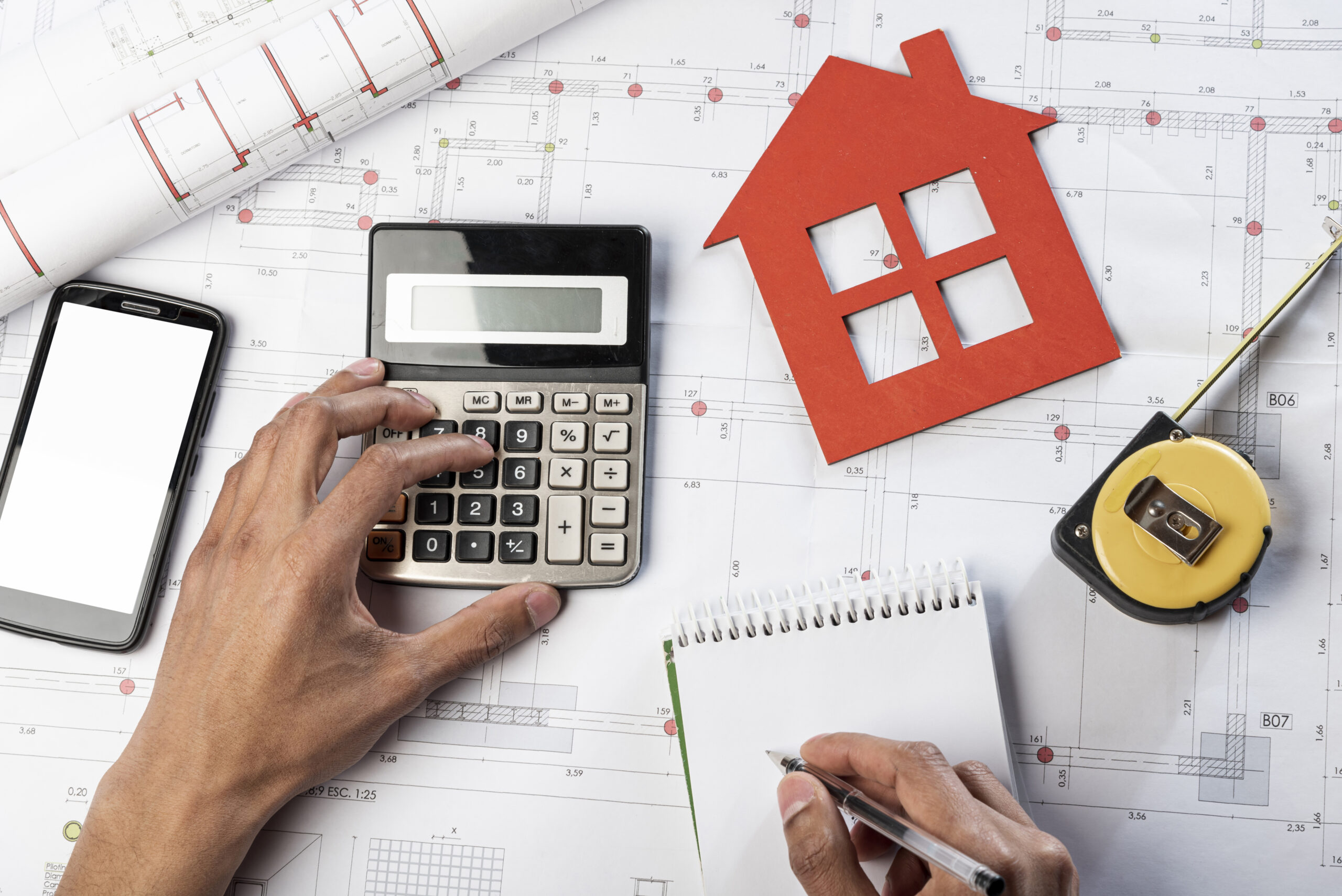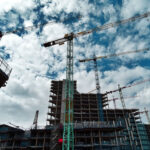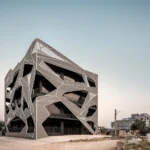Most buildings go over budget before they even begin. Why? Because people guess the numbers instead of planning them. If you don’t accurately estimate building costs, your entire project is at risk.. Whether you’re a construction company building an office tower, a retail complex, or a multi-storey house, the cost of construction in India, especially in Mohali, is never just “X per square foot.” It’s a mix of approvals, delays, materials, vendor rates, and surprises that no one tells you about upfront.
We’re sharing what works in real projects, the mistakes we’ve seen up close, and the hidden costs most people forget until it’s too late. So, if you’re a business owner planning your first build or a builder managing multiple sites, this guide will help you think smarter, plan better, and avoid budget shocks.
The Real Cost Of Building: A Step-By-Step Breakdown
Cost estimation isn’t just about applying formulas – it’s about clarity.
In real construction, money leaks when assumptions go unchecked. Someone thought the lift was included, Someone forgot to count the basement waterproofing. Someone didn’t ask if the ₹2,500/sq.ft. rate included fire systems.
So, before we even talk about materials, labour, or timelines, you need to define what kind of project you’re dealing with.
This is where most projects – especially commercial builds – start drifting, because the scope isn’t clear. And when scope floats, costs do too. That’s something we’ve learned first-hand, working on a range of office buildings, malls, and retail spaces as a commercial construction company in Mohali.
Whether you’re building from scratch or scaling up an existing space, knowing exactly what you’re setting out to build is the first step in controlling your budget.
Let’s break that down.
1.Define Your Project Type First
Before you talk numbers, talk scope.
Are you building a standalone retail outlet, a 5-floor office space, a commercial complex with basement parking, or a mixed-use mall? Or are you planning a basic residential build?
The project type decides almost everything – your material specs, your approval process, your labour requirement, and your budget structure. And each one comes with its own cost behaviour.
Ask yourself:
- What’s the total built-up area?
- Is the build RCC framed or steel structured?
- Is it shell and core, or full fit-out?
- Are you including escalators, lifts, HVAC systems, or façade glazing?
- Will you need approvals from fire, environment, or commercial zoning authorities?
If you’re working with a professional builder, especially on a commercial site, your cost isn’t just about structure. It includes services, safety compliance, finishing, and the systems that power your space.
And if you’re a builder, this is where scope creep begins when clients aren’t sure about what’s included and what’s not.
Tip: Always start with a detailed project brief. A single-page clarity document can save you lakhs later.
2. Per Square Foot Rates Aren’t Enough
We hear this all the time:
“Just tell me the cost per square foot, and I’ll do the math.”
But that number-₹1,800, ₹2,500, ₹3,200 – is only useful if you know what’s packed into it. And what’s left out.
In commercial projects, especially in cities like Mohali and Chandigarh, the cost per sq. ft. can swing wildly depending on what’s included:
- Does it cover just the civil structure or full MEP and finishing?
- Are façade treatments, HVAC, fire fighting, and lift systems included?
- Is it a base build (shell and core) or a ready-to-move finished interior?
A ₹2,200/sq.ft. quote from one construction company may look great – until you realise it doesn’t cover site development, approvals, or even staircase railings.
And in residential projects, a per square foot rate often ignores things like modular kitchen, wardrobes, solar compliance, or basement excavation.
So if you’re someone trying to evaluate quotes, don’t stop at the rate. Break it down.
You can ask:
- What’s included in this rate – structure, finishing, or turnkey?
- Is this for RCC or steel frame?
- Does it include utility connections and external works?
- Are approvals, consultant fees, and taxes part of the estimate?
Tip: If the estimate doesn’t have line items, it’s not an estimate. It’s a placeholder.
3. Break Down The Cost Into Real Components
No matter how big or small your project is, guessing a total amount won’t cut it. You need to break the estimate into specific components – each with its own logic, risks, and range.
Whether you’re working with a residential construction company for a 4BHK home or running a 1 lakh sq. ft. office build with your internal team, these are the heads you can’t ignore:
Major Construction Cost Heads
| Category | What’s Included |
| Land And Statutory Charges | Stamp duty, registration, CLU fees (for commercial), municipal deposits |
| Structure and Civil Work | RCC frame, excavation, brickwork, plastering – the core framework of your building |
| MEP Services | Mechanical, Electrical, Plumbing; add fire-fighting, HVAC, low-voltage for commercial builds |
| Interior Finishes | Flooring, false ceilings, wall finishes, toilets, partitions, lighting fixtures |
| Site Development & External Works | Driveways, parking, landscaping, boundary walls, and external signage |
| Professional & Consultant Fees | Architects, structural engineers, Vastu consultants, liaison officers, legal |
| Compliance and Approvals | Fire NOC, Environmental clearance, Power sanction, Lift approvals (especially for commercial) |
| Contingency | 5–10% buffer for unforeseen conditions like delays, cost spikes, or plan changes |
As a construction company in Mohali, we often help clients revise their estimates when they forget to account for approvals, site safety costs, or even power backup systems in office spaces.
Tip: Add a “miscellaneous and escalation” line item for unexpected rate hikes in cement, steel, or labour.
4. Your Execution Route = Your Risk Profile
How you choose to build is just as important as what you’re building.
Some clients want full control – they hire individual vendors, manage procurement, and run the project directly. Others prefer to hand everything over to a commercial construction company. While some builders operate on a hybrid model, depending on scale and timeline.
Each of these choices impacts your cost accuracy by 10-20%, timeline control, and stress levels, depending on how it’s structured.
Here’s a simplified comparison:
| Common Execution Models | ||
| Route | Pros | Risks |
| Labour + Material (In-House) | Full cost control, more flexible scope changes | High coordination effort, cash flow management, and vendor delays |
| Turnkey Contractor | One point of contact, less day-to-day management | Less transparency, slightly higher base quote |
| Item Rate Contractor | Flexible execution, pricing clarity per BOQ item | Needs tight supervision and frequent site presence |
| Construction Manager/PMC | Expert-led process, best for large commercial projects | Added fee layer, needs strong internal team to collaborate |
As a construction company working in Mohali’s commercial sector, we’ve seen projects succeed or stall based purely on how they were managed, not because of design or funding, but because the execution model wasn’t thought through.
5. Why The Cheapest Contractor Isn’t Always The Smartest Choice
In construction, saving a few lakhs upfront can cost you crores later.
Low quotes are usually low for a reason – missing scope, unskilled labour, weak cash flow, or poor finishing. And once work begins, you realise the gaps when it’s too late.
This is especially risky in commercial projects, where even small delays can stall openings, push back rents, or raise compliance flags.
What to check before hiring:
- Is everything included – services, approvals, brand specs?
- Has the contractor handled similar-scale projects?
- Are they quoting low just to win, or to actually deliver?
As one of the most experienced builders, we’ve seen plenty of projects in Mohali where recovery after a failed contract ended up costing more than building it right the first time.
Tip: Look beyond the number. Ask for breakdowns, timelines, and proof of delivery.
6. Planning, Utilities & The Delays No One Plans For
The cost of construction isn’t just in bricks and labour. It’s in waiting.
And in India, waiting is expensive – especially when your site is ready, but your permissions or utility connections aren’t.
Here’s what usually eats up time (and money):
- Planning Permissions: CLU, building plan sanctions, and commercial zoning approvals can drag for weeks – or months.
- Pre-Commencement Conditions: Fire NOC, environmental clearance, lift approvals – none of these are instant, and skipping them can put your project under scrutiny.
- Utility Connections: We’ve seen completed office buildings in Mohali sit idle for 2–3 months just waiting for electricity or water.
If you’re building commercial, these delays affect rental income, handover dates, and investor confidence. If you’re a commercial builder, they put your entire resource schedule out of sync.
So, what could be done?
- If you’re a client, get a checklist of all required approvals before you break ground.
- And if you’re a builder, start the paperwork early – before mobilisation. Keep buffers in the Gantt chart.
7. Live Budget Tracking: The Forgotten Habit
Creating a budget is one thing. Updating it is another.
It is one of the major issues – you estimate the budget at the start and then never look at it again. We’ve seen this firsthand in projects across Mohali.
But the key thing to remember is that site conditions change. Scope evolves. Rates fluctuate. And if your numbers don’t evolve with it, you lose control.
So, here are quick budget tracking habits that actually help:
- Update costs as new quotes come in
- Log every scope change, along with cost impact
- Match actual spend Vs planned weekly
- Share reports regularly (clients or internal teams)
Even the most experienced builders follow this habit to manage multiple vendors and fluctuating rates, protecting their margin.
8. Hidden Cost Triggers Most People Miss
You can plan everything, and still go over budget.
Why? Because there are always factors that sneak in late, especially on commercial sites. We’ve seen it happen to first-time clients and seasoned builders alike.
Here are some of those things:
- Soil surprises: Weak soil? You’ll need extra foundation depth.
- Design changes mid-project: One layout shift = four vendor revisions.
- Material rate hikes: Cement, steel, even basic fittings can fluctuate weekly.
- Regulatory changes: New fire safety rules or green compliance adds cost.
- Delays: Every day of delay adds to labour, rent, or holding costs.
In Mohali’s construction scene, where multiple authorities and vendors interact on the same timeline, even a week’s delay in one area can throw off the entire build schedule.
Build With Numbers That Hold Up On Site
Construction doesn’t go wrong overnight – it goes wrong when cost assumptions aren’t checked, tracked, or questioned
Whether you’re a business owner investing in your first office space or a seasoned builder managing multiple commercial sites, a solid estimate isn’t just a tool – it’s your protection against chaos
At RS Builders, we’ve seen how the right planning upfront can prevent project delays, cost blowouts, and coordination breakdowns later. As a commercial construction company and trusted builder in Mohali, we help clients think through not just the build, but the budget behind it.
FAQs
1. How do I estimate the cost of a building project?
You can break it into parts: structure, services, approvals, and interiors. Don’t rely totally only on per sq. ft. rates.
2. Why do budgets usually go off track?
Simply, because they aren’t updated once work begins. So, track every change and cost as the project moves.
3. How much buffer should I keep?
You should always keep 5–10%, depending on project size and type.
4. What hidden costs should I expect?
Delays in approvals, rising material prices, and design changes mid-way.





